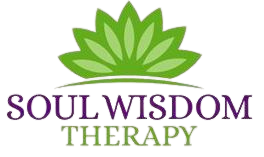Some people love experiencing the change of seasons as summer heat melts like an ice cream cone into pumpkin spice fall foliage, crisp mornings, and chilly, star-sparkled nights. Others dread the coming of autumn since it brings with it early darkness and the dimming of their emotional light. SAD -Seasonal Affective Disorder is more than just feeling a bit blue when the sun goes down. It is considered an adjunct to the diagnosis of depression, according to the National Institute of Mental Health.
 Those who experience this annual condition note that it is like a light switch that gets turned off with the flip of a calendar page. They have wondered why all they want to do is huddle under the covers rather than engage in their regular work and social activities. Once the planet makes its turn around the sun and the spring equinox arrives, they find themselves returning to their typical mood state and willingness to come out of their ‘cave of solitude.’
Those who experience this annual condition note that it is like a light switch that gets turned off with the flip of a calendar page. They have wondered why all they want to do is huddle under the covers rather than engage in their regular work and social activities. Once the planet makes its turn around the sun and the spring equinox arrives, they find themselves returning to their typical mood state and willingness to come out of their ‘cave of solitude.’
How to identify SAD:
A visit to a medical doctor and a mental health professional would be of benefit to address the symptoms of:
- withdrawal
- lack of interest in activities that are typically enjoyable,
- isolation (different from occasional chosen solitude)
- eating too much or less than usual
- sleeping too much or not enough, dramatic mood shifts thoughts of self-harm or suicide
Other symptoms include:
- craving carbs
- weight gain
- lack of physical activity
- low energy
- increased self-deprecating talk
- increased ANTs (Automatic Negative Thoughts)
SAD can be diagnosed through:
- lab tests
- physical exam
- psychological evaluation
Interventions include:
- Light Therapy- the use of a light box which increases the brain’s reaction to the exposure to illumination and mimics light from the sun.
- light programmed alarm clocks to help you awaken gradually to simulated sunlight
- medication- anti-depressants prescribed by a primary care physician or psychiatrist.
- psychotherapy sessions with a qualified therapist (Licensed Social Worker, Licensed Marriage and Family Therapist, Psychologist or Professional Counselor) to address the underlying symptoms of depression that are exacerbated by seasonal change
- taking walks while the sun is shining
- practicing meditation and yoga
The gender gap is wide with this condition. “More women than men have SAD; three fourths (or 3 out of 4) of SAD sufferers are women. The disorder most often strikes individuals ranging from 18 to 30 years of age. As might be expected, in the United States, SAD is more prevalent in northern states than southern states. In Florida, the incidence rate is 1.4 percent compared to 9.7 percent in New Hampshire, reports the New York Times. The milder form of SAD, the “winter blues,” may affect even more people.” How to love yourself through SAD:
- practice self -compassion
- treat yourself the way you would a loved one who feels the way you do
- engage in nurturing activities such as taking a bubble bath, getting a massage or mani/pedi
- listen to music that soothes your soul
- if you have the energy, turn on dance music and shake your booty
- speak with or spend time with someone in your life who gladdens your heart
- let your creative muse invite you to draw, paint, sculpt, write, or play music
- refrain from self- medicating with substances or other addictive behaviors
Remind yourself, that just like the seasons change, so too, do our moods. “When the seasons change, we experience a sympathetic internal shift. All life-forms open themselves up to receive cosmic redirection from nature during these crucial seasonal transitions, so we are likely to be more vulnerable and unsettled.” -Maya Tiwari
